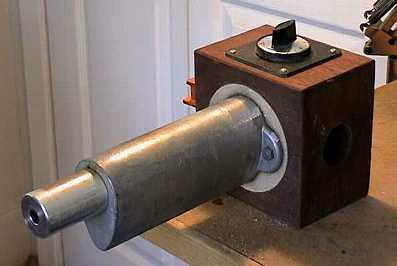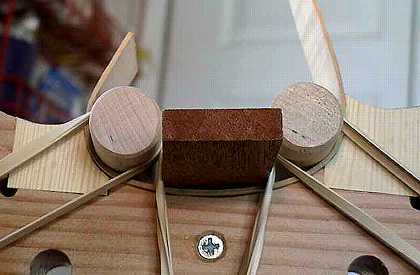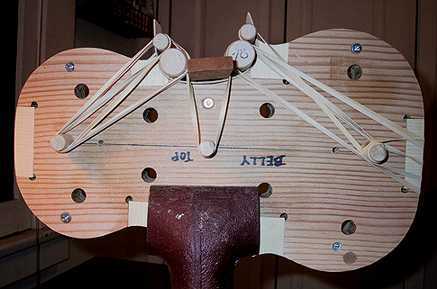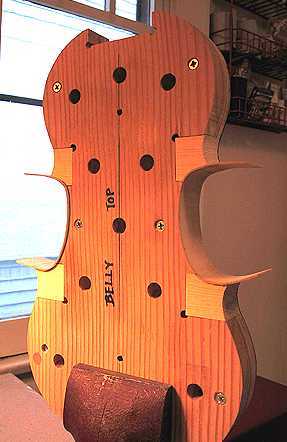|
To the right is my electric bending iron, with an attachment I just purchased from Stew-Mac. The smaller diameter extension is bolted to the iron and allows me to more easily make tighter bends (I sure could have used this when I was doing the mandolin last summer!). I first thinned the maple rims to 1 mm, using a sanding drum on my drill press; I ran the rim in between the drill press fence and the sanding drum. Then, using the bending iron, I set about bending one of the C-bouts, which have the tightest bends (next to the corner blocks). I didn't soak the maple, as I normally do rosewood sides when making guitars. All I did was spritz the maple rim with water from a spray bottle as I bent. I also tried out an idea I had read about on the Musical Instrument Makers Forum (mimf.com) --- I draped a piece of wet towel on the iron, then bent the rim. The towel kept the maple from scorching and provided lots of steam for the bending. I backed the rim with an aluminum slat, to prevent cracking. |
 |


